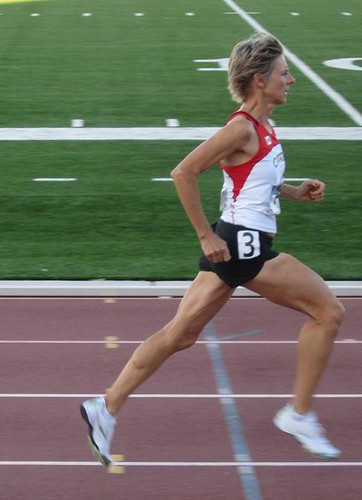 This is the second in a series of RunSmart videos. The series is on-going, with a new video released on a monthly basis. These videos complement the material presented in the book “RunSmart: A Comprehensive Approach To Injury-Free Running”. The full series of videos can be found here. A transcription of the video will also be available with each post.
This is the second in a series of RunSmart videos. The series is on-going, with a new video released on a monthly basis. These videos complement the material presented in the book “RunSmart: A Comprehensive Approach To Injury-Free Running”. The full series of videos can be found here. A transcription of the video will also be available with each post.
For those of you that are interested in a more interactive learning environment, consider attending a four hour RunSmart Level One program. You can further your education with the Level Two and Level Three programs which will focus on the application of RunSmart principles to both coaching and training program development and running injury recovery.
In this video, I will discuss the concept of changing your running form. Should you do so? And why?
I hope you enjoy the video series. If you would like me to address any specific aspect of the RunSmart approach, drop me an email or add a comment to this article.
Transcription of RunSmart Video 2 – Why Not Change Your Running Form?
Hello. I am Allan Besselink, the author of “RunSmart: A Comprehensive Approach To Injury-Free Running”. This is the next video in a series that will specifically address concepts discussed in the book and practical applications so that you can not only optimize your running performance but remain injury-free in the process.
When it comes to running mechanics, there seems to be an ongoing debate over whether an athlete should change – or attempt to change – their running form. I have seen the trends come and go. I can remember a time when it was almost a quarterly discussion in the popular running magazines. Popular opinion would waver from “absolutely not” to “definitely do”!
The problem with running is that it is just too easy. It is an activity that you have been doing since you were about a year old. Nobody thinks about “how to run”. It is a simple task of “right, left, right, left”. It is the ultimate in convenient recreational activities. Many perceive running to have little to no learning curve – no particular plays to learn, no special moves, no special coordination required - just get out and go, right?
Contrast this perspective with any other sport activity. In most other sports, your goal is to become better at what you do, and that typically involves improving your biomechanics. A perfect example is golf. If you are a golfer, would you accept someone telling you that you are going to have the same lousy swing forever? Let’s hope not! I suspect you would either watch some videos, read some books, or better yet, get some guidance from a golf pro. Your golf swing would evolve and your game would improve. I would suspect that if you are like most golfers, you would continue to try and make your swing better over time.
So why not change your running form? Isn’t running just like any other sport activity? For the past 20 years, since the earliest inception of RunSmart, I have maintained that changing your running mechanics should be like changing your golf swing – one of the keys to long-term sport improvement and athlete development, along with injury prevention.
People will spend a lot of money on a GPS, or the right shoes, or the right clothes, but will they spend any money on learning how to run? They will spend countless dollars on training programs that are almost guaranteed to promote injury, which will then cost countless dollars to remedy. They would prefer to run poorly – but longer – as opposed to running better and shorter. They tend to be resistant to learning how to become a better runner through instruction and guidance regarding their running mechanics, on the track or on the road. To me, this is counter-intuitive to the process that athletes choose to pursue in other sports.
Running mechanics can be addressed via some simple verbal and mental cues, along with specific drills and training activities. Over the next few videos, I will present some of my keys to accomplishing this.
Thanks for watching, and RunSmart!
Photo credits: abesselink

 "Running Injuries: Etiology And Recovery- Based Treatment" (co-author Bridget Clark, PT) appears in the third edition and fourth editions of "Clinical Orthopaedic Rehabilitation: A Team Approach" by Charles Giangarra, MD and Robert C. Manske, PT.
"Running Injuries: Etiology And Recovery- Based Treatment" (co-author Bridget Clark, PT) appears in the third edition and fourth editions of "Clinical Orthopaedic Rehabilitation: A Team Approach" by Charles Giangarra, MD and Robert C. Manske, PT.
 Allan Besselink, PT, DPT, Ph.D., Dip.MDT has a unique voice in the world of sports, education, and health care. Read more about Allan here.
Allan Besselink, PT, DPT, Ph.D., Dip.MDT has a unique voice in the world of sports, education, and health care. Read more about Allan here.
 Top 5 finalist in three categories: "Best Overall Blog", "Best PT Blog" and "Best Advocacy Blog".
Top 5 finalist in three categories: "Best Overall Blog", "Best PT Blog" and "Best Advocacy Blog".